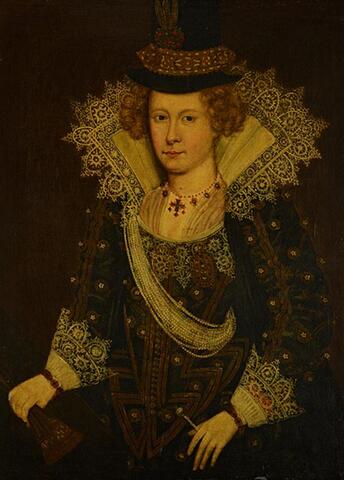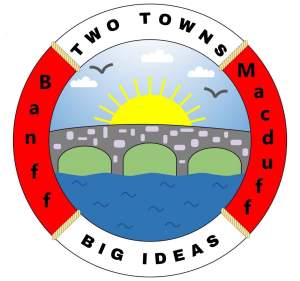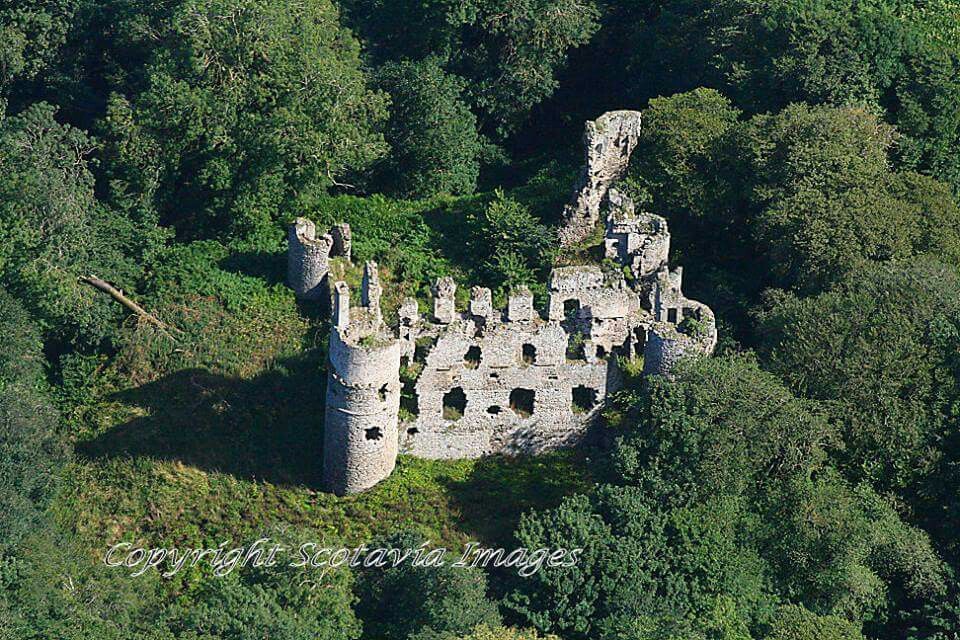
The Ogilvies of Boyne were very important round here for more than 200 years. Sir Walter Ogilvie was body squire to two kings, James III and James IV, and in 1486 was given the thanage of Boyne. He was Sheriff of Banff, and married an heiress, Margaret Sinclair of Deskford and Findlater. His great-grandson, Alexander, in 1562 entertained the young Mary Queen of Scots at Craig of Boyne. “After dining at Craig she proceeded to Banff, where she supped and slept”. Alexander caught the eye of her lady-in-waiting, Mary Beaton, and married her in 1566. Do you remember the song “Yestreen the Queen had four Maries, Tonight she’ll hae but three. There was Mary Beaton, and Mary Seton, and Mary Carmichael, and me”? Alexander built Boyne Castle, a fitting place for a lady brought up in the chateaux of France, but it bankrupted him.
The Ogilvies were all intermarried. Alexander’s son James married Isobel Ogilvie of Dunlugas, and when he died she married an Ogilvie of Glassaugh. Their daughter Marie married an Ogilvie of Carnousie and Knock, and her older brother James married a sister of Lord Findlater, another Ogilvie. That James had a short but interesting life. In 1623 he and five other Ogilvies was up in court for attacking and beating the minister of Forres in church. That didn’t stop him being appointed a JP for Banffshire later the same year. Two years later he went overseas, though we don’t know where, and was never heard of again. He wisely left a will naming executors to look after the children “till they be of perfect age of fourteen”.
His son Walter lived through the Civil War. First he backed the Covenant against the King, and in 1645 Montrose’s army swept through the north. “The Laird himself kept the Craig of Boyne, wherein he was safe, but his haill lands for the most part were burnt up and destroyed”. His views changed, as he found the Covenanters too extreme, and he became an “Engager” and supported the King. So he was on the losing side when Cromwell won the battle of Worcester, and was disciplined by the church when he got home. However, in 1660 there was the Restoration, and Sir Walter (note the ‘Sir’) now was on the winning side.
His son Sir Patrick was the greatest of the line, for 24 years one of the two MPs for Banffshire, and a Judge of the Court of Session, as Lord Boyne, “one of the most remarkable and many-sided men Banffshire has ever produced (Alistair Tayler)”. He did a lot for Portsoy, finding the funds for building the harbour, and protecting the marble quarries. But he never could balance his books, and there was public scandal about his young third wife and Campbell of Cawdor. And he was a Jacobite in the days of Queen Anne. He claimed to have had an interview with the Queen, and to have persuaded her to recognize her half-brother (the Old Pretender, James VIII and III) as her heir. In the end in 1705 he was bought out by his cousin, the Earl of Findlater and Seafield, who let the family stay on in the castle but took the estates, the land between Banff and Portsoy.
In fact Sir Patrick’s son James was a committed and active Jacobite, over in France from 1707, plotting to bring a French fleet. In 1708 he landed at Gamrie to get ready for them, but the fleet turned tail. Of course in 1715 he was back for the real rebellion. He was Brigadier Ogilvie at the Battle of Sheriffmuir (“Some say that we won, and some say that they won”) in 1716, and after that we have a proclamation from him to “All noblemen, barons… and all others the fencible men .., to meet and convene at the Gallowhill of Banff”. No-one came, and it was the last straw for Lord Findlater, who ejected James’s wife from Boyne Castle. He fled to France. The Stuart royal family paid for his son’s funeral in 1717. James died in 1728, the last Ogilvie of Boyne.
The Boyne townhouse is still there on Church Street in Banff, with a later facing, but the core is there.

